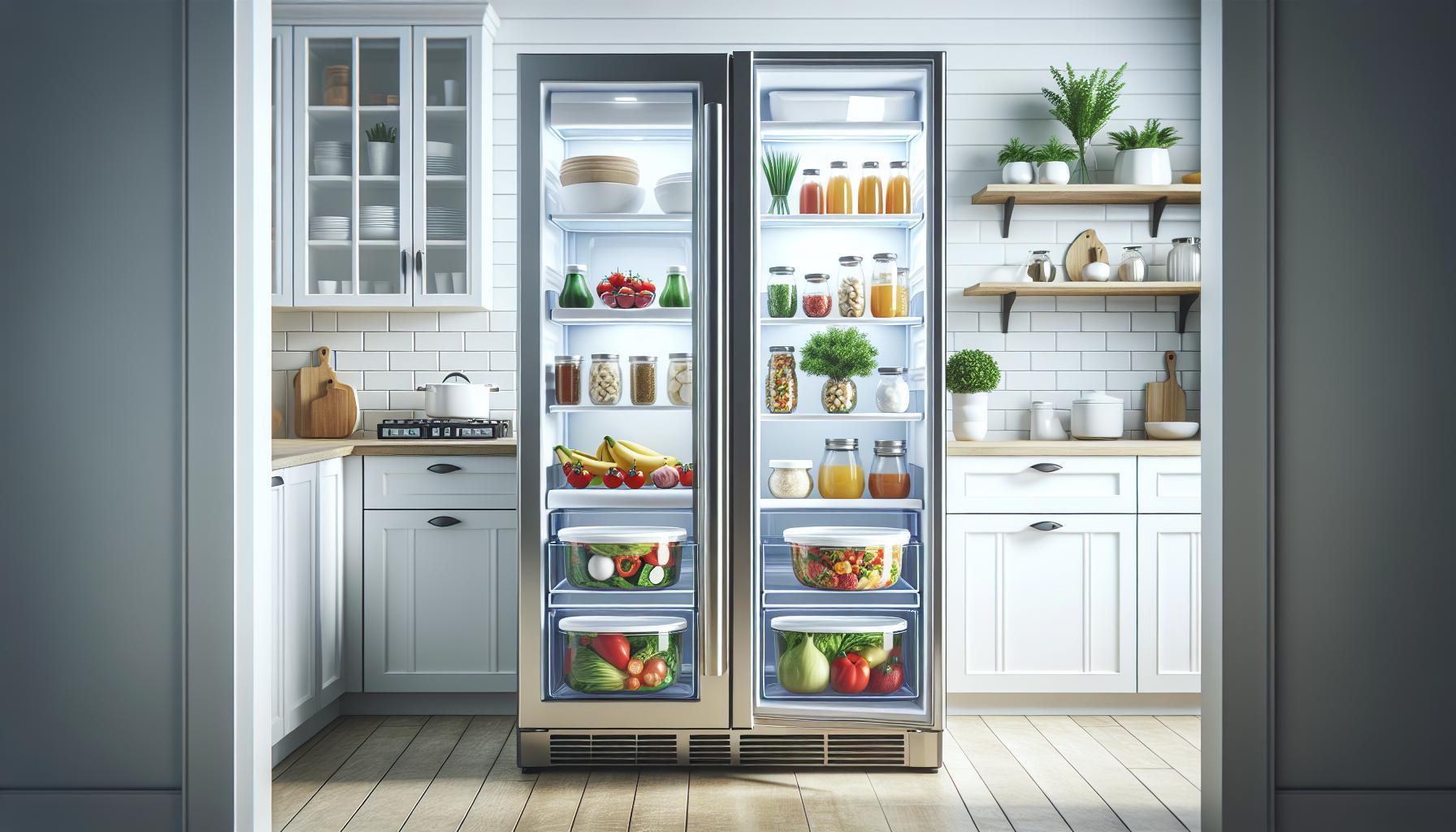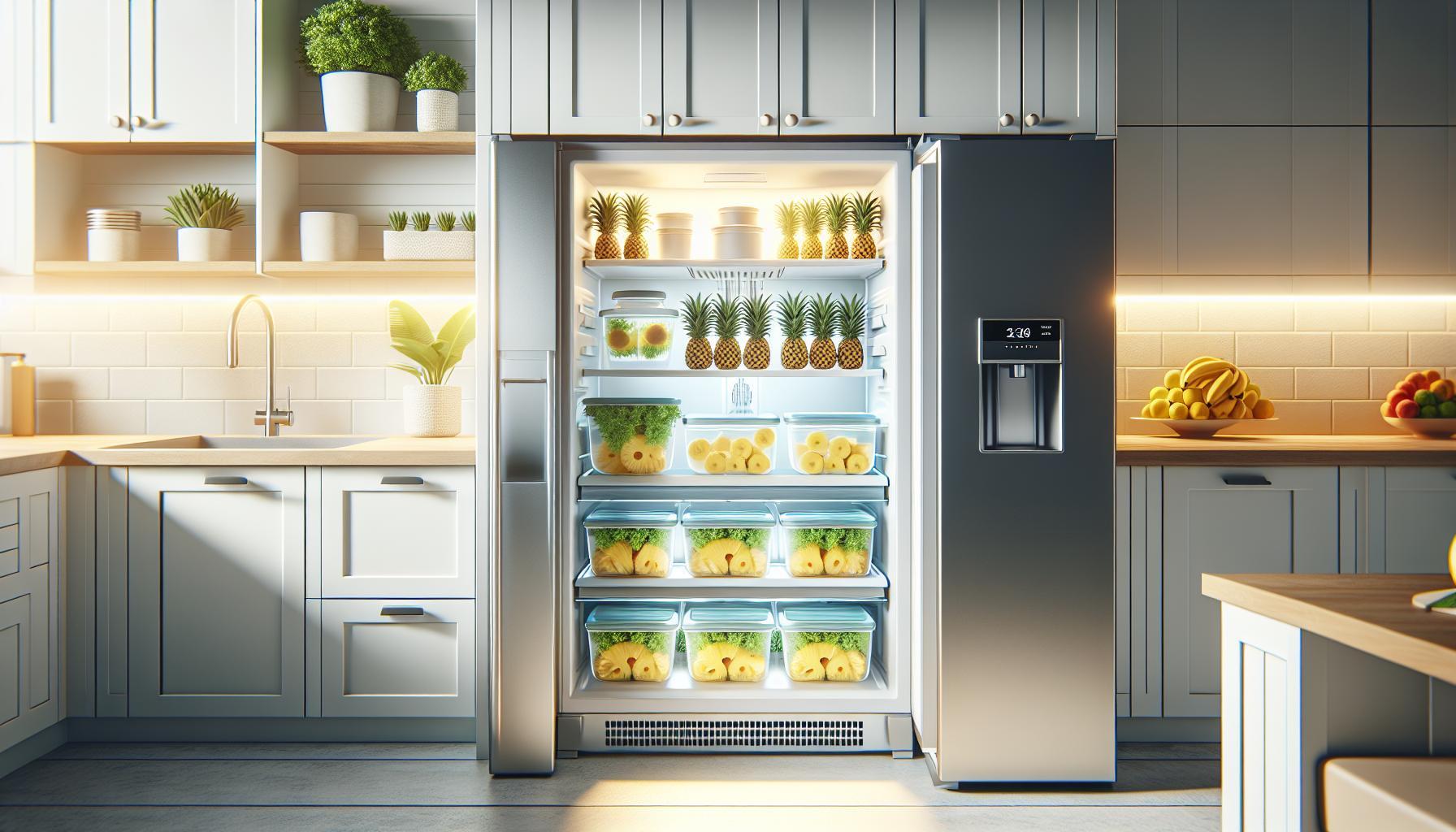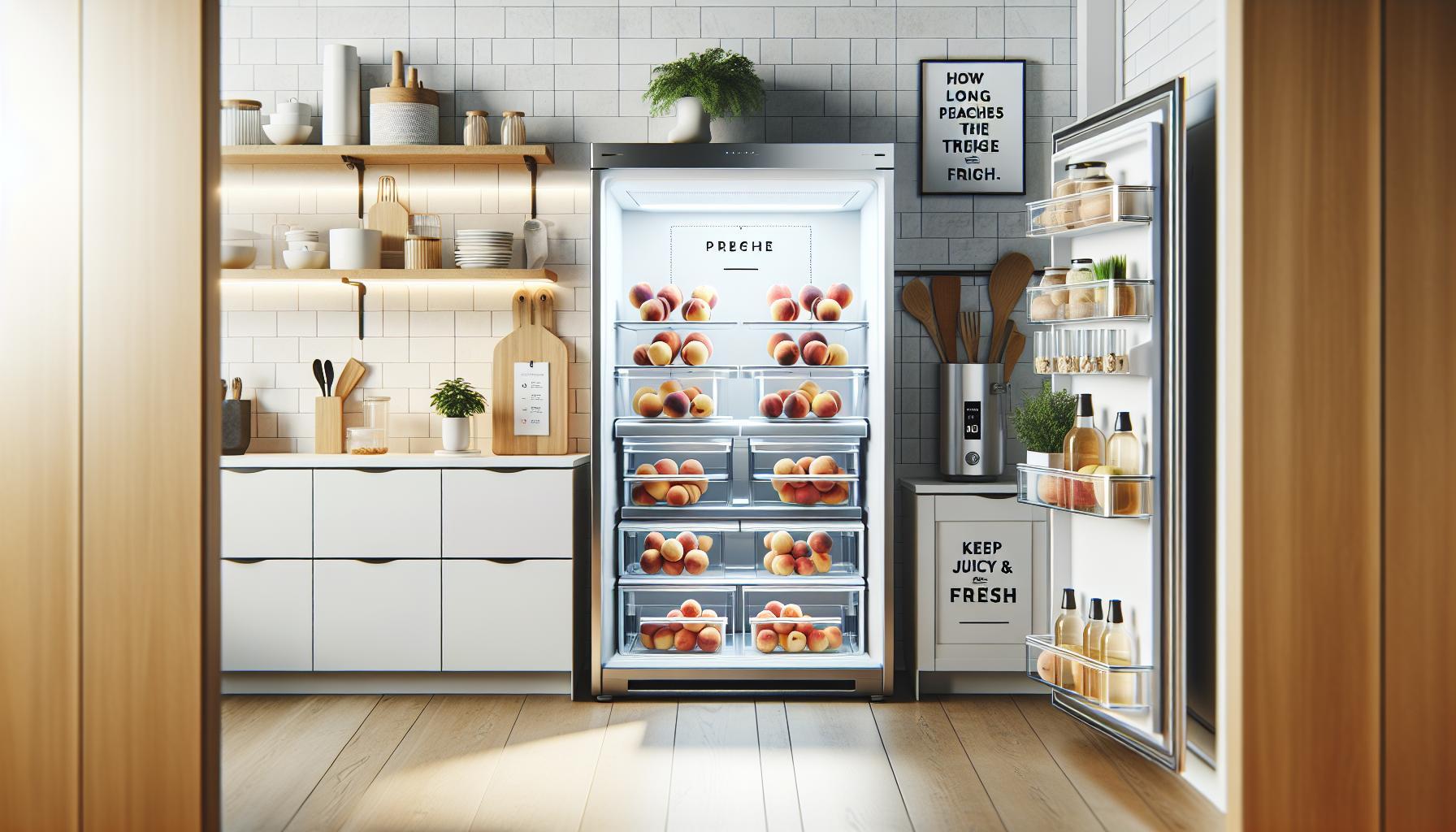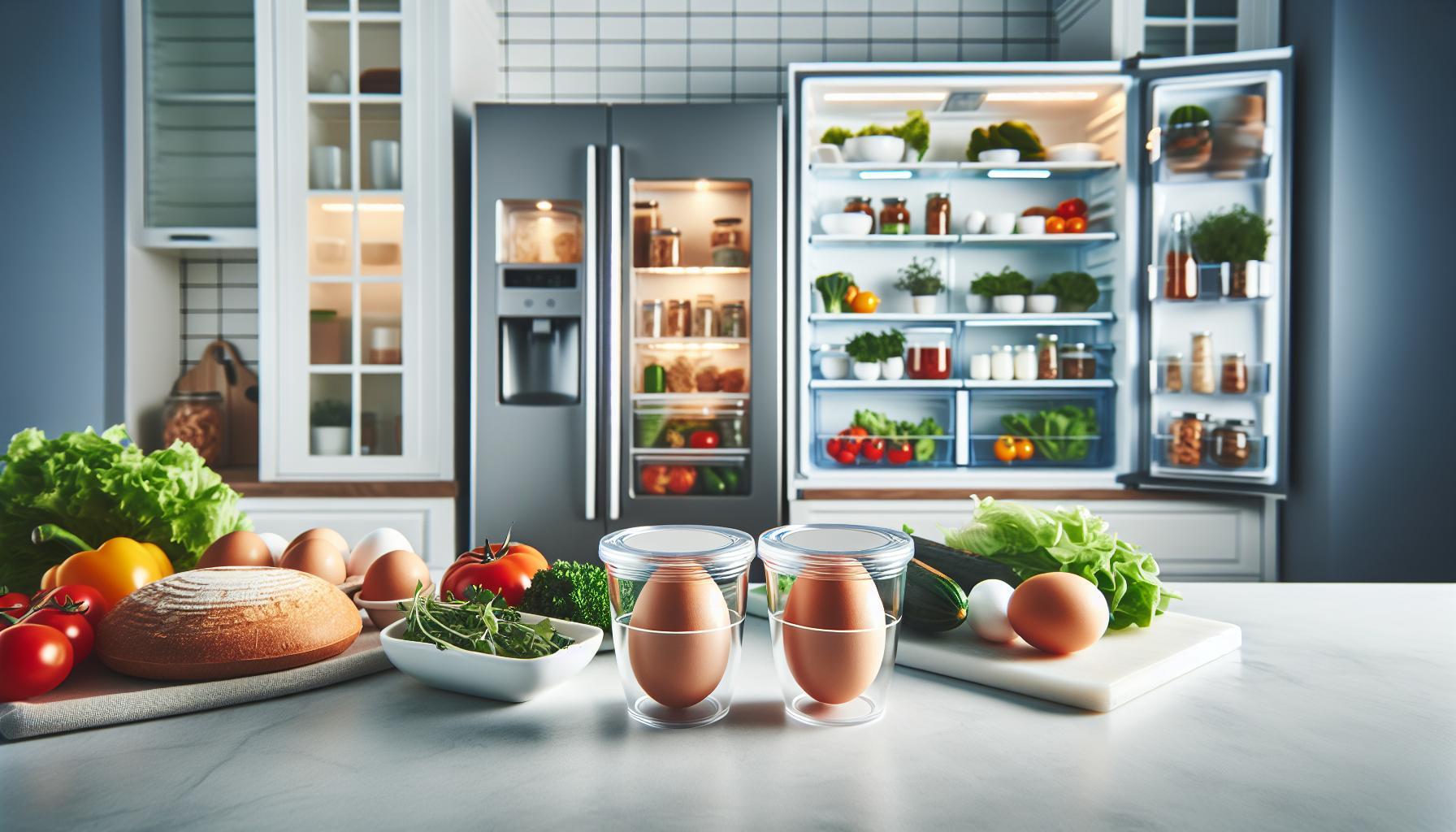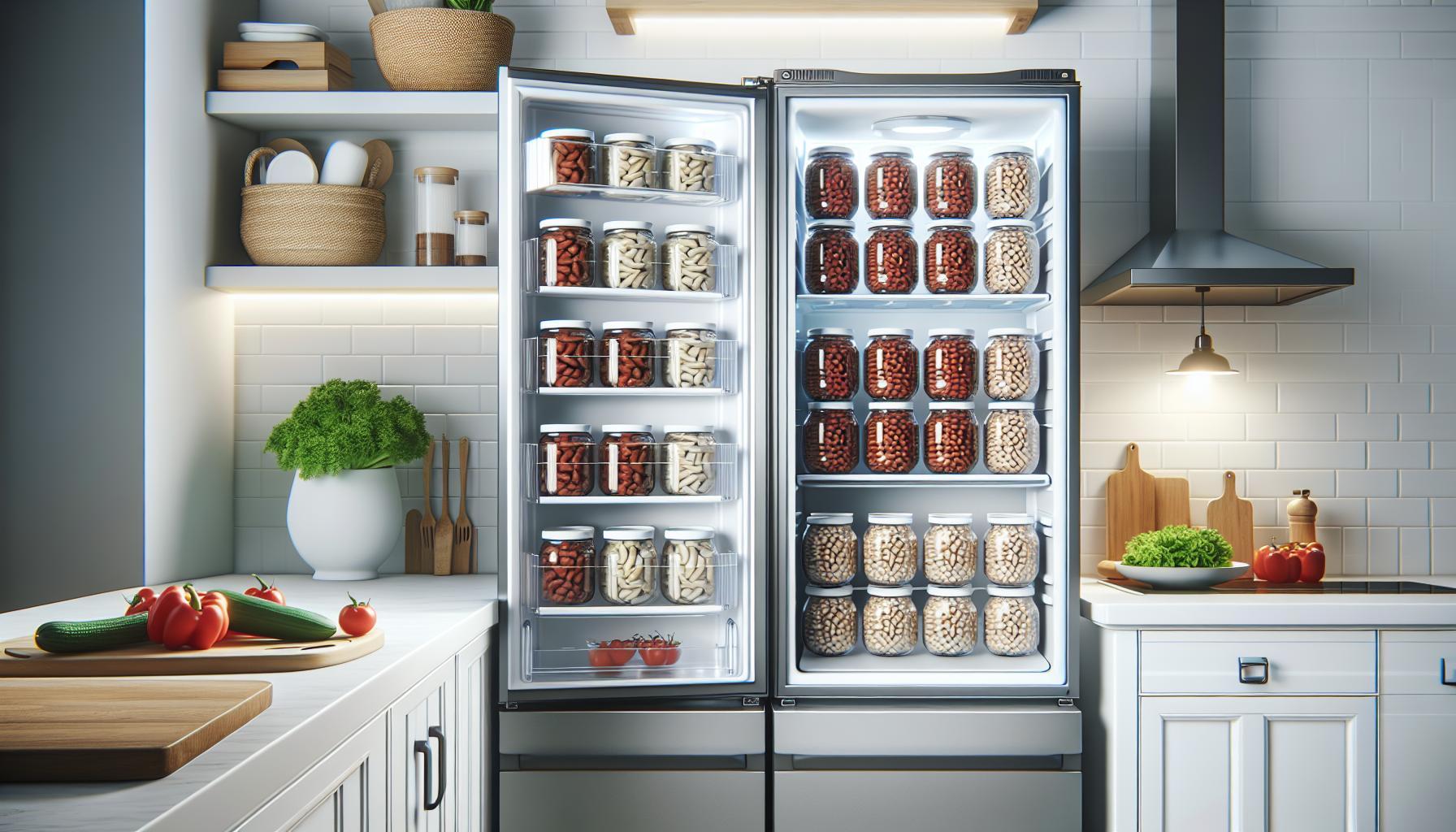Gumbo, a beloved stew with deep roots in Southern cuisine, is not only a delightful dish but also one that many people enjoy preparing in large batches. However, one common question that arises is: how long does gumbo last in the fridge? Understanding proper storage can help you preserve its rich flavors and textures while ensuring food safety.
As you savor that last bowl of gumbo, knowing how to store it correctly means you won’t have to waste any of that delicious creation. Whether it’s shrimp, sausage, or chicken gumbo you’re working with, following safe storage guidelines can protect your leftovers and allow you to enjoy them later without worry. Dive in to discover practical tips and timeframes that will keep your gumbo flavorful for days to come!
How Long Can Gumbo Stay Fresh in the Fridge?
Gumbo is a beloved dish, rich in flavors and cultural significance, but knowing how long it can last in your fridge is essential to ensure both safety and quality. Typically, gumbo can stay fresh in the fridge for about three to four days when stored properly. It’s important to cool the dish to room temperature before transferring it to an airtight container. This practice not only helps preserve its taste and texture but also minimizes the risk of bacterial growth.
To maximize the shelf life of your gumbo, consider the ingredients used. Varieties with seafood or dairy might have a shorter lifespan compared to those made primarily with meat or vegetables. Therefore, be mindful of the proteins involved when determining when to consume or discard your gumbo. If you find yourself with leftovers, consuming them within the recommended timeframe will ensure you enjoy the full range of flavors without compromising food safety.
In case you need to keep your gumbo for a longer period, freezing is the best option. Gumbo can last in the freezer for up to six months. When you’re ready to enjoy it again, make sure to thaw it safely in the refrigerator overnight before reheating. This approach will help maintain the integrity of the flavors and textures that make gumbo so delightful.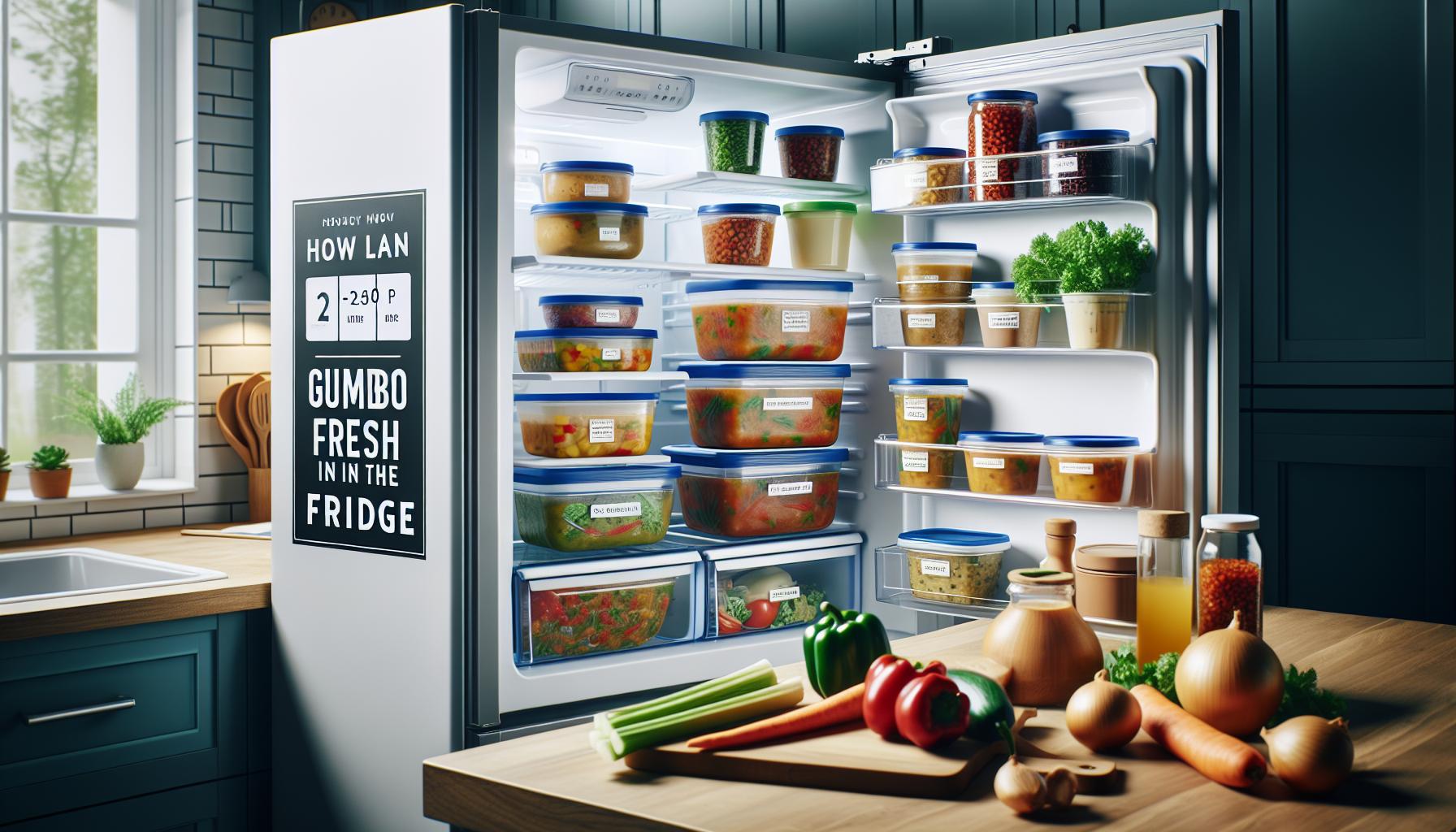
Factors Affecting Gumbo Shelf Life
The freshness of gumbo in your fridge is influenced by several critical factors that can dictate its shelf life. One prominent impact is the ingredients used in the dish. For instance, gumbo made with seafood or dairy tends to spoil faster than those predominantly featuring meats like chicken or sausage. While meat-based gumbos can last three to four days, seafood varieties may only remain safe to eat for two to three days due to the higher risk of bacterial growth.
Another consideration is the storage method employed once the gumbo is cooked. It is paramount to cool the dish to room temperature before placing it in an airtight container to minimize moisture and air exposure, both of which can accelerate spoilage. If gumbo is left out too long at room temperature (generally more than two hours), it can enter the “danger zone,” where bacteria thrive, significantly reducing its safe consumption window.
Additionally, the environment in which your gumbo is stored plays a vital role. Refrigerators that are kept at a consistent temperature below 40°F (4°C) help prolong freshness. If your fridge tends to fluctuate or isn’t maintained at safe temperatures, the gumbo’s shelf life may be compromised, increasing the risk of foodborne illnesses.
Finally, understanding the size of your stored portions can also aid shelf life. Smaller, single-serving containers will cool faster and are less likely to attract contaminants compared to large bowls. Being aware of these factors and employing best practices for storage will ensure that your gumbo remains flavorful and safe to eat for as long as possible.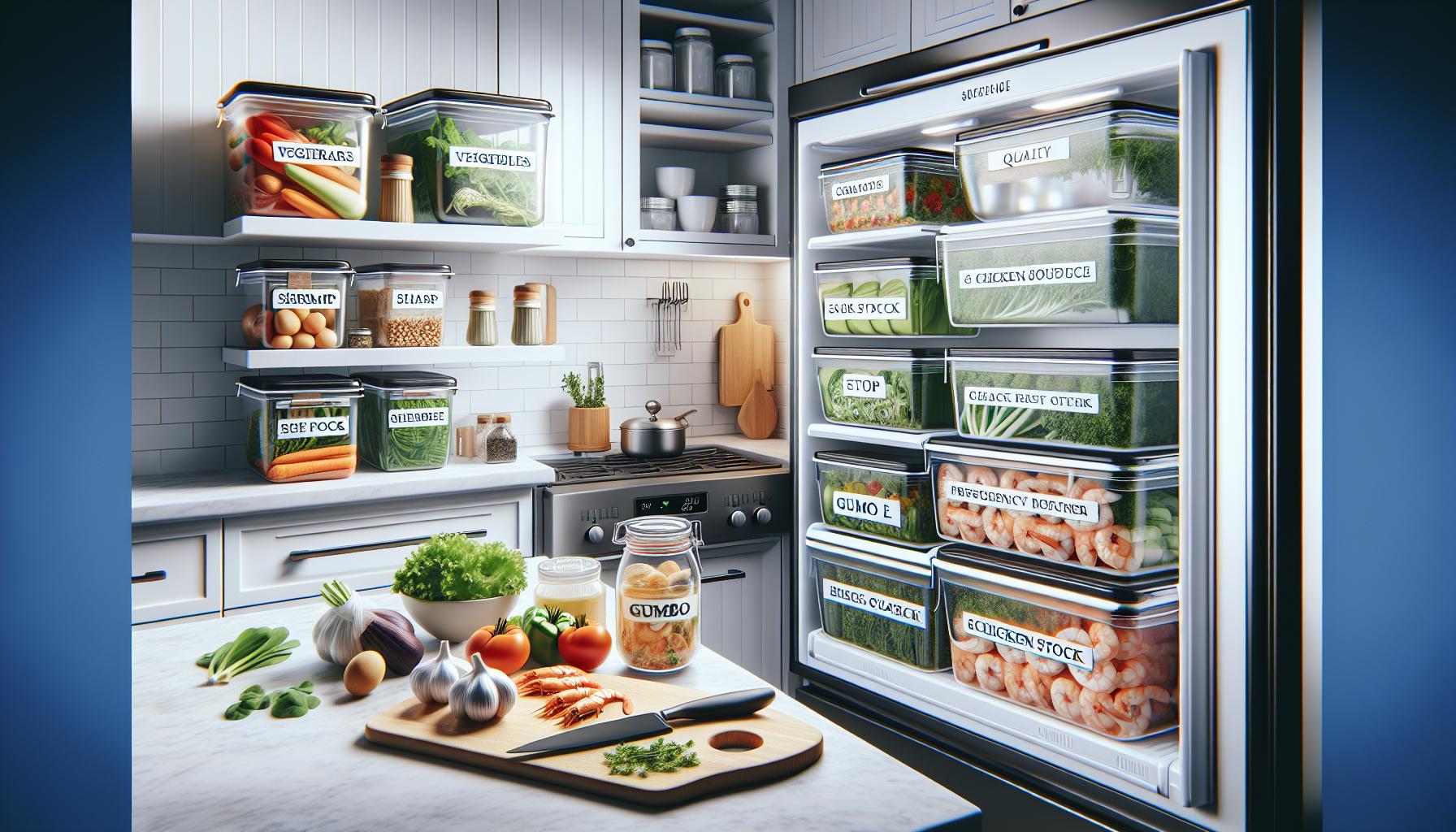
Best Practices for Storing Gumbo
To ensure your gumbo remains fresh and flavorful for as long as possible, following best practices for storage is essential. The right techniques not only protect the integrity of the dish but also promote food safety.
Start by cooling your gumbo to room temperature within two hours after cooking to minimize bacterial growth. To expedite this process, consider transferring it into shallow containers. This increases surface area and allows heat to dissipate more quickly. Once cooled, immediately transfer the gumbo into airtight containers. Glass or BPA-free plastic containers are ideal, with the latter being particularly useful for portioning out servings.
Always label your containers with the date of storage using a permanent marker. This simple practice ensures you keep track of how long the gumbo has been stored; as a general rule, meat-based gumbo can last for three to four days in the refrigerator, while seafood gumbo should be consumed within two to three days due to its susceptibility to spoilage.
When it comes to refrigeration, ensure your fridge is set at 40°F (4°C) or lower. Regularly check the temperature with an appliance thermometer to avoid any fluctuations that might compromise your gumbo’s freshness. Additionally, avoid overloading your fridge, which can obstruct airflow and lead to uneven cooling-this can affect stored food, including your gumbo. By taking these steps, you can keep your gumbo safe to eat while preserving its rich flavors for days after cooking.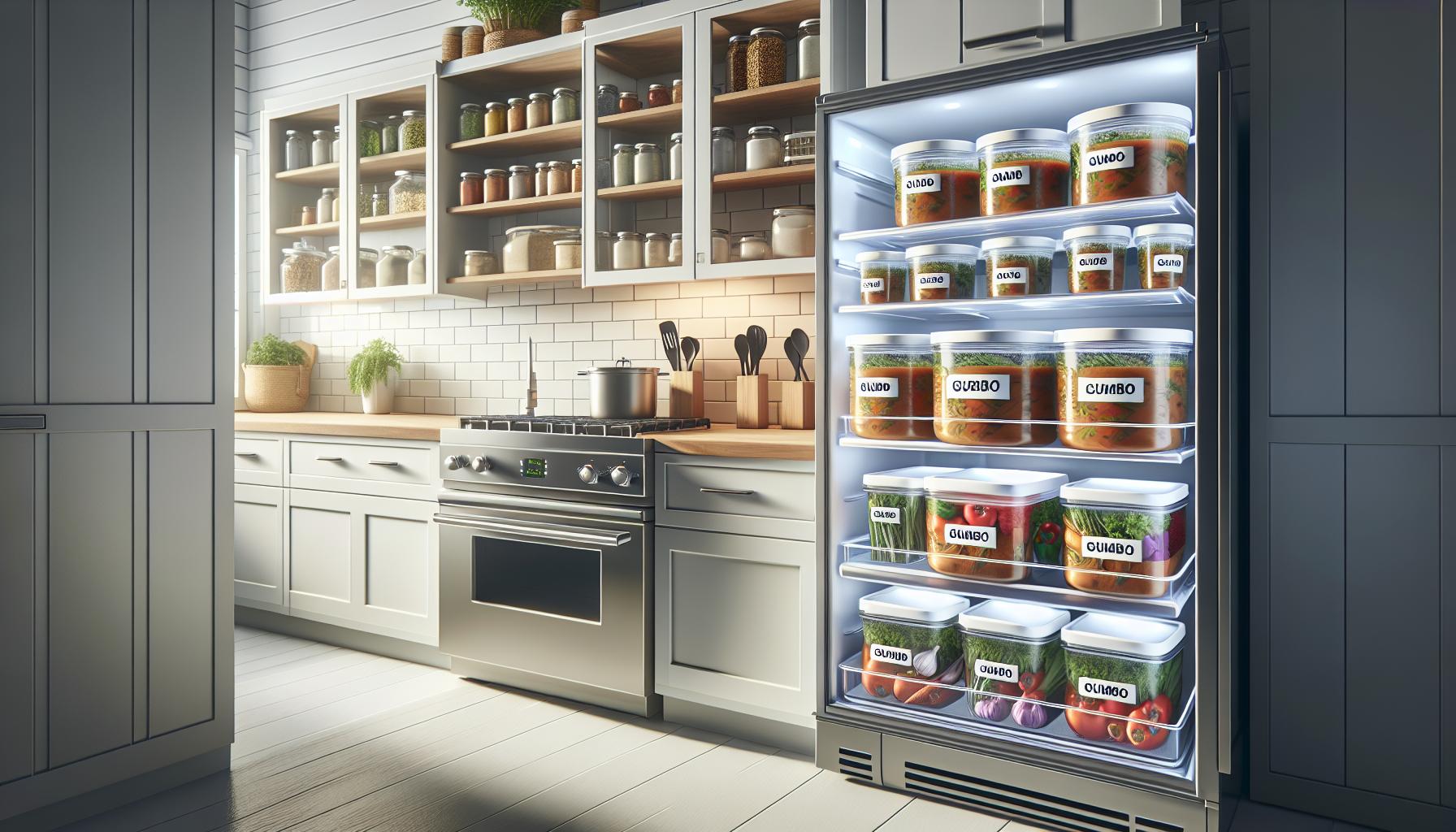
Signs Your Gumbo Has Gone Bad
When indulging in a delightful bowl of gumbo, the last thing anyone wants is to find out their meal has gone bad. Foodborne illness is a serious concern, and being able to identify spoilage can keep you and your loved ones safe. To ensure your gumbo remains enjoyable, take note of several telltale signs that it has spoiled.
One of the most apparent indicators is the presence of an off or sour odor. Fresh gumbo should emanate the rich, hearty aromas of its ingredients, but any sudden change to a pungent smell means it’s time to toss it. Additionally, don’t rely solely on scent; visual clues can also signal spoilage. Look for any unusual discoloration, particularly a dull or grayish appearance in the ingredients. Molds, which may appear as fuzzy or discolored patches on the surface, are an unmistakable sign that your gumbo should be discarded immediately.
Another critical factor to consider is texture. Fresh gumbo has a thick, stew-like consistency, while spoiled gumbo may show signs of separation or an unusual sliminess. If you notice an odd or grainy texture when you stir your gumbo, this likely indicates that bacterial growth has occurred. Lastly, if you’re ever in doubt, err on the side of caution-when in question, it’s best to discard any food that you suspect has gone bad to avoid health risks.
Maintaining strict attention to storage guidelines and actively inspecting your gumbo can provide peace of mind, helping you enjoy your delicious dish while ensuring your safety.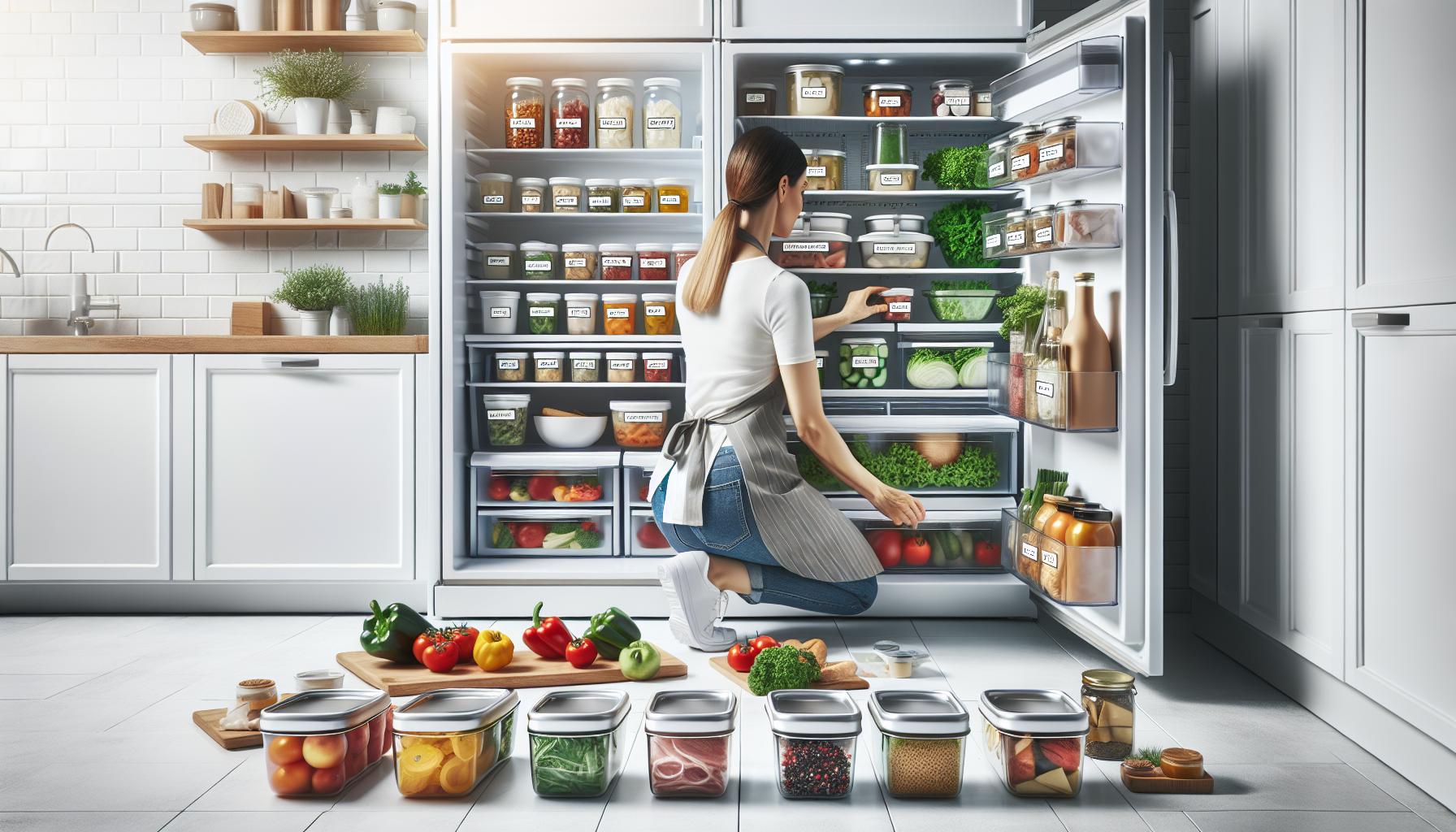
How to Reheat Gumbo Without Losing Flavor
Reheating gumbo can be an art in itself, as this cherished dish thrives on its complex flavors and hearty consistency. The key to successfully warming up your gumbo lies in choosing the right method to preserve its original essence while avoiding that unfortunate development of a watery or overcooked texture. Whether you’re getting ready for a quick lunch or dinner, keep these methods in mind to maintain the dish’s vibrancy.
Start by simmering on the stovetop for the most control over the reheating process. Pour your leftover gumbo into a saucepan and set the heat to low to medium. Stir it gently and frequently as it warms up. This method allows you to keep an eye on the flavor and texture-the goal is to heat it through without allowing it to boil aggressively, which could alter its consistency. Consider adding a splash of broth or stock if you notice the gumbo becoming too thick, ensuring you retain that rich mouthfeel.
If you’re pressed for time, the microwave can also be an effective reheating option, though it requires a bit more attention. Place your gumbo in a microwave-safe bowl and cover it loosely with a microwave-safe lid or paper towel to trap some moisture. Heat it in short increments, around 30 seconds to 1 minute, stirring between each interval until it’s heated evenly. This technique helps prevent hot spots and keeps your gumbo from drying out.
Additionally, if you have ingredients that can be easily reheated-like rice or sausage-to serve alongside your gumbo, consider warming them separately and cautioning against overcooking them in the process. Once your gumbo is heated, you can blend these components back together.
In general, reheated gumbo can remain delicious and satisfying, as long as these methods are employed. Enjoy your flavorful dish again while savoring the depth of flavors that makes gumbo a beloved classic!
Freezing Gumbo: Tips and Tricks
Freezing gumbo can be the perfect solution for preserving this flavorful dish for future enjoyment. With the right approach, you can maintain the rich essence of your gumbo, allowing you to savor it just as if it were freshly made. A well-prepared gumbo can last in the freezer for up to six months, making it a convenient dish to have on hand for busy nights or impromptu gatherings.
To freeze gumbo effectively, start by allowing it to cool completely at room temperature but do not leave it out for more than two hours to prevent bacterial growth. Once cooled, transfer your gumbo into airtight, freezer-safe containers or heavy-duty freezer bags. When using bags, be sure to squeeze out as much air as possible before sealing; this minimizes freezer burn and keeps the flavors intact. Label each container or bag with the date to keep track of how long it has been stored.
For best results, consider portioning your gumbo before freezing. This allows you to thaw and reheat only what you need, rather than the entire batch, ensuring the rest remains fresh. Thaw frozen gumbo in the refrigerator overnight or under cold running water, and avoid defrosting at room temperature, as this can lead to unsafe bacteria growth.
Tips for Flavor Preservation
When freezing, be aware that ingredients like potatoes may become grainy, and certain seafood can lose texture if kept too long. To mitigate these effects, you can freeze the gumbo without adding any rice or seafood. Prepare those ingredients fresh when you’re ready to enjoy your thawed gumbo. Always reheat it thoroughly to a temperature of at least 165°F (74°C) to ensure it’s safe for consumption. By following these guidelines, you can enjoy the convenience of frozen gumbo while preserving its delightful flavors and textures.
Flavor Preservation: Storing Gumbo Safely
When it comes to enjoying gumbo, ensuring that it remains flavorful and safe to eat is paramount. Proper storage techniques can significantly extend the shelf life of this beloved dish, allowing you to indulge in its rich flavors days after it has been prepared. Gumbo can typically last in the refrigerator for about 3 to 4 days when properly stored. However, to maintain its delicious taste and quality, it is essential to follow certain guidelines.
To preserve the flavors and safety of your gumbo, always begin by cooling it quickly before refrigeration. This can be achieved by transferring the gumbo into shallow containers, which helps it cool faster and prevents bacteria from multiplying. Once cooled, seal the containers tightly to keep out air and moisture. Store the gumbo in the coldest part of your refrigerator, ideally below 40°F (4°C), to ensure it stays fresh. When reheating, it’s crucial to bring the gumbo to a rolling boil for at least 2 minutes, as this helps eliminate any potential bacteria that might have developed over time.
Using airtight containers plays a vital role in flavor preservation. These containers not only prevent leaks but also reduce the risk of your gumbo absorbing odors from other foods in the fridge. If you’re uncertain about how long your gumbo has been stored, it’s always advisable to rely on your senses. If the gumbo looks discolored, emits a strange odor, or has an off taste, it’s better to err on the side of caution and discard it.
Finally, incorporating good labeling practices can enhance your food storage strategy. Write the date on each container so you can easily track how long the gumbo has been stored. This simple step can help you enjoy your gumbo at its best-delicious and safe for consumption while avoiding the risk of foodborne illnesses.
Gumbo Storage: Avoiding Common Mistakes
When it comes to storing gumbo, avoiding common mistakes can significantly impact its flavor and safety. One of the most prevalent errors is not allowing the gumbo to cool properly before refrigeration. Placing hot gumbo directly into the fridge can raise the overall temperature inside, potentially putting other stored foods at risk for bacterial growth. Instead, transfer the gumbo into shallow containers to accelerate cooling, ideally cooling it to room temperature within two hours, which helps keep it safe for consumption.
Another common pitfall is neglecting to use airtight containers. Storing gumbo in non-sealed or loosely covered dishes exposes it to air, which can lead to oxidation and spoilage. Air exposure not only diminishes flavor but also increases the chances of cross-contamination from other foods in the fridge. Ensure that your containers are tightly sealed; consider using glass or BPA-free plastic options specifically designed for food storage.
Labeling your gumbo is yet another essential practice many forget. Simply writing the date on each container eliminates guesswork and helps track freshness. It’s easy to forget when you stored a certain batch, and clear labeling ensures you consume it before it goes bad. Make this a habit, as it enhances your food safety routine and minimizes waste.
Lastly, be mindful of the storage duration. Even when refrigerated properly, gumbo should ideally be consumed within 3 to 4 days. Keeping it longer than this can risk food safety. Regularly check your stored gumbo, and when in doubt, trust your senses-if it smells off or looks unusual, it’s best to discard it. By implementing these straightforward practices, you can enjoy your gumbo without worrying about safety or loss of flavor.
Creative Ways to Use Leftover Gumbo
Leftover gumbo presents a fantastic opportunity to get creative in the kitchen, ensuring nothing goes to waste while still enjoying the bold flavors of this classic dish. Instead of just reheating the gumbo for another meal, consider these inventive ways to repurpose it into something new and delightful.
One easy and flavorful option is transforming your gumbo into a filling for stuffed peppers or tomatoes. Simply hollow out your chosen vegetables, fill them with the leftover gumbo, and bake until the veggies are tender. This method not only adds a nutritious twist but also gives a delightful presentation for family dinners or gatherings.
Another idea is to mix leftover gumbo with cooked grains, such as rice, quinoa, or even pasta, to create a hearty salad. Toss in fresh ingredients like avocado, lime juice, and cilantro for a refreshing contrast to the rich flavors of the gumbo. This salad can serve as a main dish or a unique side, providing a balance of textures and tastes while staying within food safety guidelines.
For those who enjoy breakfast, consider using leftover gumbo as a base for a savory breakfast hash. Sauté some potatoes until crispy, then stir in the gumbo just long enough to heat it through. Top with a fried or poached egg for a satisfying morning meal that’s both hearty and comforting.
Lastly, gumbo can be incorporated into soups or stews to boost flavor and nutrition. Add it to a pot of broth, throwing in extra vegetables and seasonings as desired. This not only revitalizes the gumbo but creates a new dish that’s perfect for a cozy night in.
By thinking outside the box, you can enjoy your leftover gumbo in many unique ways while ensuring it remains safe and delicious.
Nutritional Considerations for Stored Gumbo
When it comes to enjoying gumbo, understanding its nutritional profile and how it changes upon storage is crucial. Gumbo is particularly rich due to ingredients like andouille sausage, chicken, seafood, and the holy trinity of vegetables (bell peppers, onions, and celery). The combination of these elements contributes to its hearty, delicious nature, but also affects how long it can be safely stored in the fridge without compromising its safety and flavor.
Generally, gumbo can be refrigerated for 3 to 4 days after cooking. After this timeframe, the risk of bacterial growth increases, which could potentially lead to foodborne illnesses. Factors such as the temperature at which the gumbo is stored and how quickly it’s cooled after cooking play a significant role in its shelf life. To ensure safety, it’s best to cool leftover gumbo to room temperature for no more than two hours before transferring it to an airtight container and placing it in the refrigerator. This minimization of exposure to the temperature “danger zone” (40°F to 140°F) helps to maintain both safety and nutritional integrity.
Gumbo’s nutritional content remains relatively stable over a few days, though ingredients like seafood may degrade faster, affecting both taste and texture. To keep your gumbo nutritionally sound, consider these tips:
- Storage Container: Use airtight glass or plastic containers to limit exposure to air and moisture.
- Portion Control: Store gumbo in smaller portions to avoid repeated exposure upon opening the main storage container.
- Refrigeration Temperature: Ensure your fridge is set at or below 40°F to keep your gumbo fresh for longer.
To maximize flavor and prevent nutrient loss during storage, avoid reheating only portions of your leftovers multiple times. Instead, heat only what you plan to consume at one time to maintain quality and safety. When reheating, make sure the gumbo reaches an internal temperature of 165°F to ensure any potentially harmful bacteria are eliminated. Understanding these nutritional considerations will empower you to enjoy your gumbo safely and deliciously, making the most out of your culinary creation.
Gumbo Variations and Their Storage Needs
The diverse world of gumbo means that various ingredients and methods can impact how long different types stay fresh in the fridge. Traditional gumbo varieties include chicken and sausage, shrimp, or a combination of seafood. Each variation introduces unique proteins and flavors that can influence storage life. Typically, gumbo can safely last in the refrigerator for 3 to 4 days. However, the shelf life can vary significantly between seafood-heavy gumbos and those that are meat-based.
Seafood gumbo, particularly those containing shrimp or crab, tends to have a shorter lifespan due to the delicate nature of these ingredients. For seafood varieties, it’s prudent to consume them within 1 to 2 days to ensure optimal freshness and safety. When storing, make sure that the gumbo cools to room temperature before sealing it in an airtight container, as rapid cooling helps minimize bacteria growth.
Non-seafood gumbos, especially those focused on hearty meats like chicken or andouille sausage, usually fare better and can last closer to that 4-day mark. To preserve the quality, consider these best practices:
- Ingredient Focus: Always label your gumbo with the date it was made to keep track of how long it has been stored.
- Container Types: Glass containers are excellent for storage; they won’t absorb odors and can be transferred easily for reheating.
- Freezing Options: If you suspect you won’t finish the gumbo within the suggested timeframe, consider freezing it. Gumbo generally freezes well for up to 3 months.
While experimenting with gumbo recipes, it’s essential to be mindful of specific storage needs to maintain the dish’s signature flavors and textures. With careful handling, you’ll be able to enjoy your culinary efforts for several days, ensuring that each bowl tastes as delightful as the first.
Expert Recommendations for Gumbo Longevity
To ensure your gumbo remains flavorful and safe to eat, several expert recommendations can significantly extend its longevity and maintain its quality. A frequently overlooked aspect is the cooling process after cooking; allowing gumbo to cool to room temperature before transferring it to the fridge is crucial. This rapid reduction in temperature minimizes the growth of bacteria that can occur when food is left out, ensuring that your gumbo remains safe to eat for longer.
When storing your gumbo, consider the type of container you use. Instead of plastic, opt for glass containers. They are less likely to absorb odors and stains, keeping your gumbo tasting as fresh as the day you made it. Always ensure that these containers are airtight to prevent moisture from entering and altering the texture and flavor of your dish. Additionally, be diligent about labeling your gumbo with the preparation date; this simple step will help you keep track of how long it’s been in your fridge.
For those looking to store gumbo for an extended period, freezing is an excellent option. Gumbo can typically be frozen for up to three months without significant loss of flavor or texture. To do this effectively, portion out servings in airtight freezer bags or containers, leaving some space for expansion. When you’re ready to thaw, do so in the refrigerator instead of at room temperature to maintain food safety and preserve quality.
Lastly, it’s essential to be mindful during reheating. Avoid overheating the gumbo which can alter its original flavor and texture. Instead, reheat gently on the stove over low heat, stirring frequently to ensure even warming. This method not only safeguards the gumbo’s taste but also allows for even heat distribution, reducing the chance of hot spots that can lead to uneven cooking.
By following these expert tips, you’ll enhance the shelf life of your gumbo while ensuring that it retains the delightful flavors that make this dish a favorite.
Q&A
Q: How long can I keep gumbo in the fridge?
A: Gumbo can typically be stored in the fridge for 3 to 4 days. To maintain its flavor and quality, ensure it is properly sealed in an airtight container to reduce exposure to air and moisture.
Q: Can I store gumbo with rice mixed in?
A: It’s best to store gumbo and rice separately. When combined, rice can absorb the liquid and become mushy when reheated, affecting the gumbo’s texture. Store them in separate containers for better quality.
Q: How can I tell if gumbo has gone bad?
A: Signs that gumbo has spoiled include an off smell, discoloration, or the presence of mold. If the texture seems slimy or unusually thick, it’s best to discard it for safety reasons.
Q: How can I reheat gumbo while keeping it flavorful?
A: Reheat gumbo on the stove over medium heat, stirring occasionally. Add a splash of broth or water to restore moisture and flavor as it heats, ensuring an even and tasty result.
Q: Is it safe to freeze leftover gumbo?
A: Yes, gumbo freezes well for up to 6 months. Allow it to cool, then store it in freezer-safe containers, leaving some space for expansion. Thaw in the fridge overnight before reheating.
Q: What’s the best way to defrost frozen gumbo?
A: The safest way to thaw frozen gumbo is to place it in the refrigerator overnight. Alternatively, you can use the microwave’s defrost setting if you’re short on time, then reheat on the stove for the best flavor.
Q: Can I add more ingredients to leftover gumbo before storage?
A: It’s advisable to avoid adding ingredients to leftovers before storing, as this can affect texture and flavor. Instead, enjoy the gumbo as is or use any additions when reheating for freshness.
Q: Why does gumbo taste better the next day?
A: Gumbo often tastes better the next day due to the flavors melding and intensifying as they rest. Allowing it to sit overnight lets the spices and ingredients develop a richer taste profile.
Encouraging further engagement, consider checking the “Best Practices for Storing Gumbo” section in the original article for enhanced food safety tips.
Wrapping Up
Now that you know how long gumbo lasts in the fridge and the best practices to keep it flavorful, why not make the most of your leftovers? Remember, it’s best to consume your gumbo within three to four days for optimal taste and safety. If you have more questions about food storage or want to explore delicious ways to use leftover gumbo, check out our articles on meal prepping and the ultimate shrimp gumbo recipe.
Don’t wait-discover how easy it is to enjoy every bite of your gumbo again! If you found this guide helpful, please share it with your friends and family or drop a comment below with your favorite gumbo experiences. For more tips on keeping your meals safe and delicious, be sure to subscribe to our newsletter for the latest updates and exclusive recipes. Your culinary journey continues, so keep exploring!

